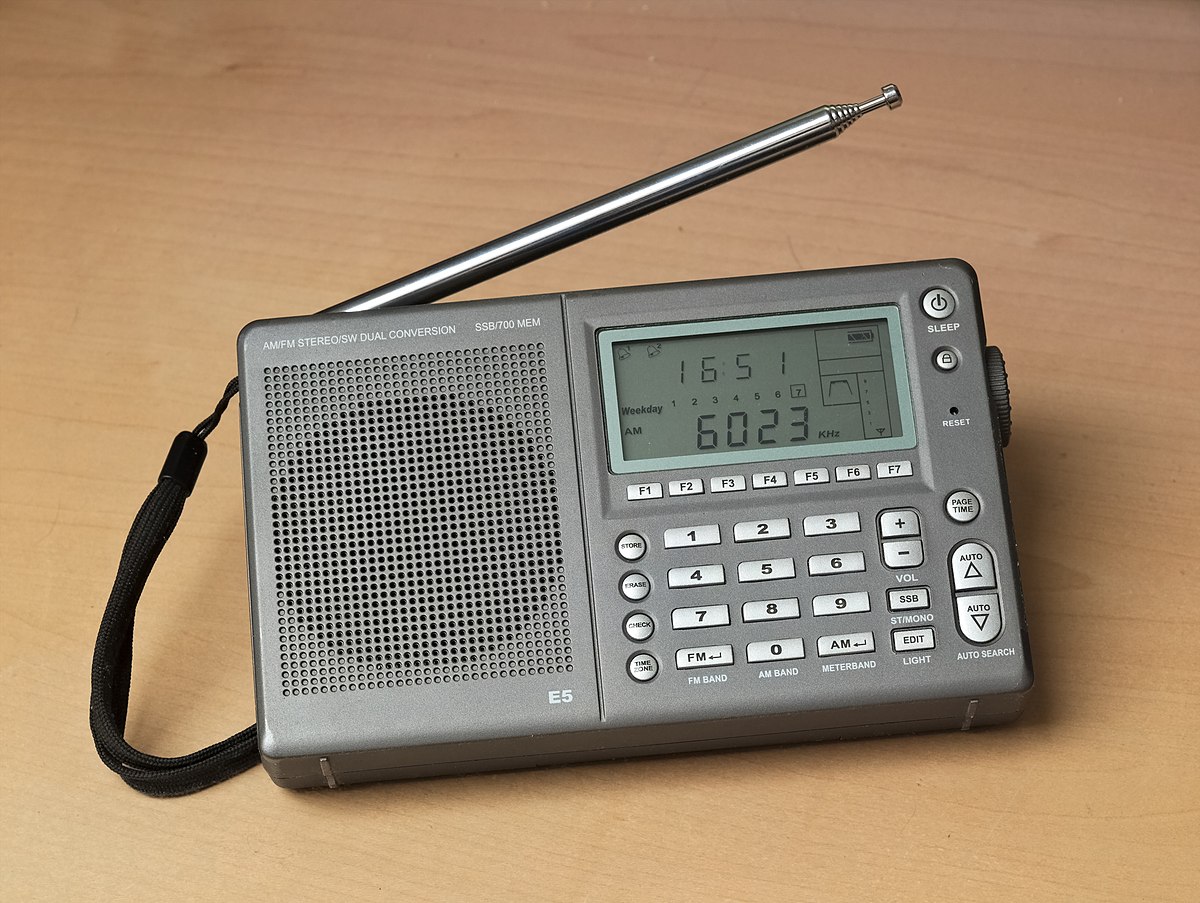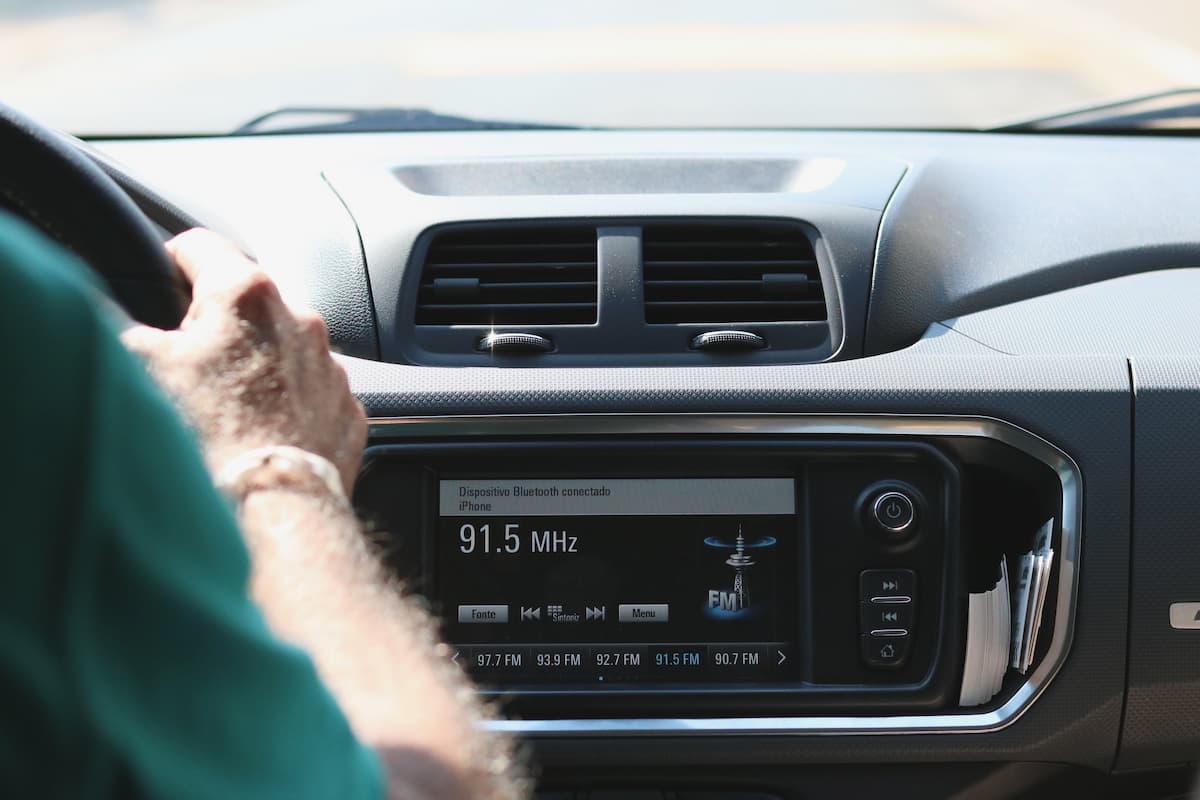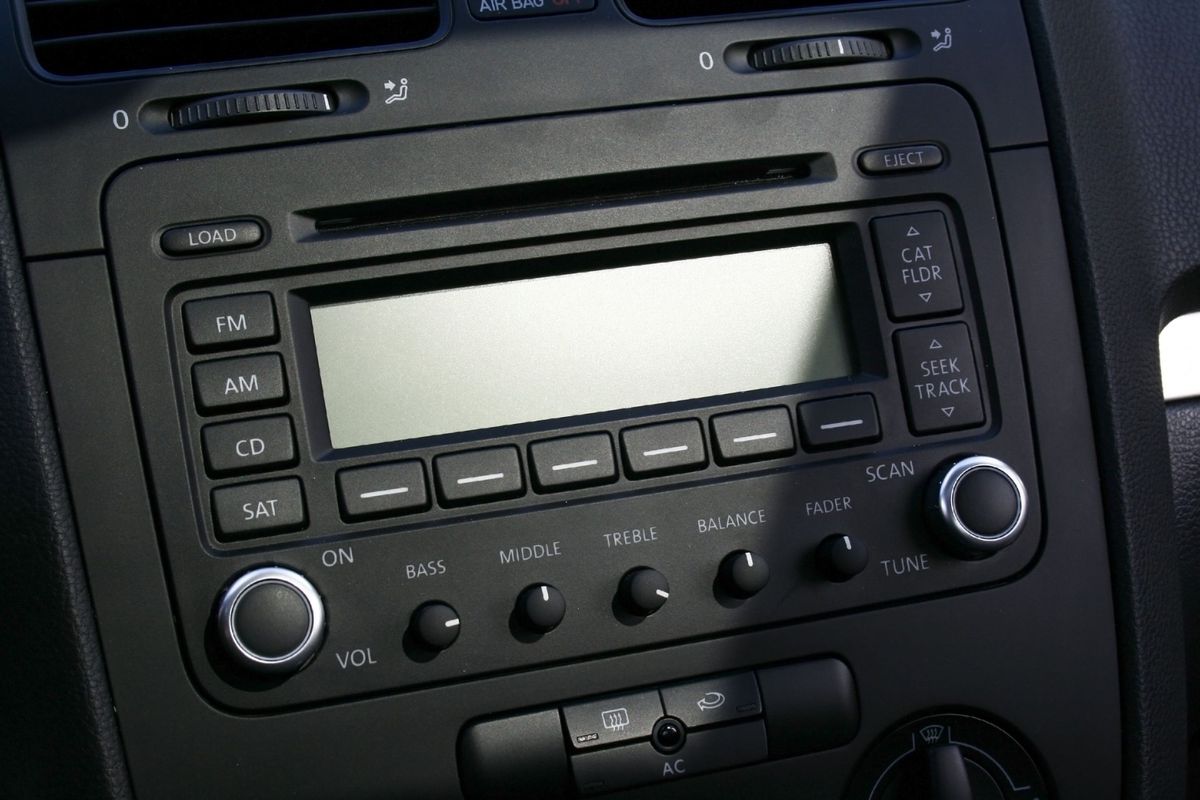Home>Devices & Equipment>Radio>How To Use A Shortwave Radio


Radio
How To Use A Shortwave Radio
Modified: January 22, 2024
Learn how to use a shortwave radio and explore the world of radio communication. Tune in to various frequencies and gain knowledge about radio technology.
(Many of the links in this article redirect to a specific reviewed product. Your purchase of these products through affiliate links helps to generate commission for AudioLover.com, at no extra cost. Learn more)
Table of Contents
Introduction
Welcome to the exciting world of shortwave radio! Known for its ability to pick up long-distance transmissions from around the globe, shortwave radio has been a popular communication and entertainment medium since the early 20th century. Whether you’re a novice or a seasoned radio enthusiast, this article will guide you through the ins and outs of using a shortwave radio.
Shortwave radio operates in the frequency range of 1.8 to 30 MHz, allowing it to bounce off the ionosphere and travel over long distances. This unique characteristic grants listeners the opportunity to tune in to stations from different countries, bringing a diverse range of news, music, and cultural content right to your ears.
While the internet and satellite radio have gained popularity in recent years, shortwave radio remains a reliable and accessible alternative, especially in remote areas or during emergencies. It offers a sense of adventure as you explore the airwaves, stumbling upon unexpected transmissions from far-flung corners of the world.
In this guide, we’ll cover everything you need to know to get started with your shortwave radio. From understanding the technology behind it to setting up and optimizing your reception, you’ll be well-equipped to embark on your radio listening journey.
Whether you’re interested in staying informed about global news, immersing yourself in different cultures, listening to music from around the world, or simply enjoying the thrill of picking up distant signals, shortwave radio has something for everyone. So let’s dig in and discover the fascinating world of shortwave radio together!
Understanding Shortwave Radio
Shortwave radio operates within a specific range of frequencies that allows it to propagate over long distances by bouncing off the ionosphere. This unique characteristic makes it possible to pick up signals from around the world. Unlike FM or AM radio, which have limited range, shortwave radio transmissions can cover vast distances without the need for internet or satellite connections.
Shortwave radio signals are used by a wide range of broadcasters, including national radio stations, international broadcasters, amateur radio operators, and utility stations. These signals can carry a variety of content, including news, music, weather reports, cultural programming, and even diplomatic messages.
One of the key advantages of shortwave radio is its ability to reach areas where other forms of communication might be unreliable or unavailable. This makes it an invaluable tool in times of emergencies, natural disasters, or conflicts, as it can provide crucial information to affected regions.
Shortwave frequencies are divided into different bands, each with its own range of frequencies. The most commonly used bands for shortwave radio broadcasting are the 25 meter, 31 meter, 49 meter, 60 meter, 75 meter, and 90 meter bands. Each band has its strengths and weaknesses, and the choice of band to tune into depends on various factors, such as the time of day and the location of the broadcaster.
It is important to note that shortwave radio is subject to interference from various sources, including atmospheric conditions, electrical appliances, and other radio signals. This interference can affect the quality of reception, causing static, fading, or distortion. However, with the right equipment and some know-how, you can minimize these issues and enjoy a clear and enjoyable listening experience.
In the next section, we will explore how to choose the right shortwave radio to suit your needs and budget. Whether you’re a casual listener or a dedicated enthusiast, there are plenty of options available to ensure you get the most out of your shortwave radio experience.
Choosing the Right Shortwave Radio
When it comes to choosing a shortwave radio, there are several factors to consider to ensure you find the right one for your needs. Here are some key points to keep in mind:
- Budget: Determine your budget range before starting your search. Shortwave radios can range in price from budget-friendly options to high-end models with advanced features. Deciding on your budget will help narrow down your options.
- Frequency Coverage: Look for a shortwave radio that covers a wide frequency range, preferably from 1.8 to 30 MHz. This will allow you to tune in to a broad spectrum of stations and maximize your listening experience.
- Size and Portability: Consider where and how you plan to use your shortwave radio. If you’re on the go or traveling frequently, a compact and portable radio would be ideal. However, if you intend to use it primarily at home, a larger tabletop model may be more suitable.
- Reception Features: Look for radios with features that enhance reception, such as a built-in antenna, external antenna connectors, and selectable bandwidth options. These features can help improve the clarity and strength of the received signals.
- Audio Quality: Pay attention to the audio quality of the radio. Look for radios with good speaker quality or the ability to connect external speakers or headphones for better sound output.
- Additional Features: Consider any additional features you may desire, such as digital tuning, memory presets for your favorite stations, clock and alarm functions, and the ability to receive other bands, such as FM, AM, or even VHF airband.
- Reviews and Recommendations: Read reviews and seek recommendations from other shortwave radio users to get an idea of the performance and reliability of different models. Online forums, radio enthusiast websites, and user reviews on e-commerce platforms can be valuable sources of information.
By considering these factors, you can narrow down your options and find a shortwave radio that meets your requirements and preferences. Remember, the best radio for you is the one that fits your budget and fulfills your specific needs, whether you are a casual listener or a dedicated enthusiast.
Now that you have an idea of how to choose the right shortwave radio, let’s move on to the next section to learn how to set it up for optimal performance.
Setting Up Your Shortwave Radio
Once you have chosen the perfect shortwave radio, it’s time to set it up for an optimal listening experience. Here are some essential steps to consider:
- Location: Find a suitable location for your radio, preferably near a window or outdoors if possible. This will help improve reception by reducing interference from buildings and obstructions. Avoid placing the radio near electrical appliances or electronic devices that may cause interference.
- Antenna: Most shortwave radios come with a built-in telescopic antenna. Extend the antenna fully to its maximum length for better signal reception. Experiment with its orientation by rotating or adjusting it to find the position that provides the strongest and clearest signal.
- External Antenna: For even better reception, consider using an external antenna. These can be simple wire antennas or more complex ones like long wire or dipole antennas. External antennas allow you to capture weaker signals and minimize interference. Consult the radio’s manual or online resources for guidance on connecting and setting up an external antenna.
- Power source: Shortwave radios can be powered by batteries or AC power. Ensure you have the correct type and number of batteries if using battery power. If using AC power, make sure the radio is plugged into a stable and grounded outlet.
- Grounding: Connecting a grounding wire or rod to your shortwave radio setup can help reduce static and interference. Consult a professional or refer to resources specific to your region for proper grounding techniques.
- Tuning: Familiarize yourself with the tuning controls of your radio. Most shortwave radios have a tuning knob or buttons to adjust the frequency. Start by tuning to popular shortwave bands and known stations to get a feel for how the radio responds to different frequencies.
- Experimentation: Don’t be afraid to experiment with different settings on your radio. Try adjusting the bandwidth, fine-tuning controls, and even the modulation settings to find the sweet spot for optimal reception.
Setting up your shortwave radio may require some trial and error. It’s all part of the experience, so don’t hesitate to explore and fine-tune the setup to achieve the best reception possible.
In the next section, we will delve into the exciting task of finding shortwave radio stations. Stay tuned!
Finding Shortwave Radio Stations
Now that you have your shortwave radio set up, it’s time to embark on the exciting journey of exploring and finding shortwave radio stations. Here are some tips to help you discover a world of diverse programming:
- Frequency Guides: Invest in a good frequency guidebook or use online resources that provide information on shortwave radio stations and their respective frequencies. These guides typically list stations by country, frequency, and broadcast time, giving you a starting point for your tuning adventures.
- Online Station Directories: Explore online directories and databases that provide comprehensive lists of shortwave radio stations. These directories often include useful information such as schedules, frequencies, program types, and even streaming options for some stations that broadcast online.
- Radio Monitoring Websites: Check radio monitoring websites that offer real-time information on active stations. These websites provide live updates on stations currently broadcasting, their frequencies, and signal strengths. This can be useful for discovering stations during specific times of the day or for tracking special broadcasts.
- International Broadcasters: Tune into well-known international broadcasters for a variety of content in different languages. Stations such as the BBC, Voice of America, Radio France International, and Radio China International have a long history of shortwave broadcasting and offer a range of programs, including news, music, and cultural shows.
- Amateur Radio Operators: Amateur radio operators, also known as ham radio operators, often engage in conversations or broadcast messages on designated shortwave frequencies. Listening to these conversations can provide an interesting glimpse into the world of amateur radio and unique perspectives from individuals around the world.
- Numbers Stations: Explore the mysterious world of numbers stations. These enigmatic stations transmit strings of numbers or coded messages, often associated with intelligence agencies. While the purpose of these stations remains largely unknown, they add an element of intrigue and mystery to the shortwave radio experience.
- Time Shifting: Due to the nature of shortwave radio propagation, certain frequencies and stations may have better reception at specific times of the day or night. Experiment with different frequencies and adjust your listening schedule to discover the optimal times to tune in to your favorite stations.
Remember, shortwave radio listening is a dynamic and ever-changing experience. Stations may come and go, and reception conditions can vary depending on factors like time, weather, and atmospheric conditions. So, embrace the adventure and keep exploring to uncover hidden gems and unexpected surprises on the airwaves.
In the next section, we will dive into the basic operation of a shortwave radio, providing you with the necessary knowledge to navigate the controls and settings of your device. So, let’s continue our shortwave radio journey!
Basic Operation of a Shortwave Radio
Understanding the basic operation of your shortwave radio is essential to fully utilize its capabilities. Here are the key aspects to familiarize yourself with:
- Power On: Ensure the radio is powered on using either the battery or AC power source. Check the battery levels regularly to avoid interruptions in your listening sessions.
- Frequency Selection: Use the tuning knob or buttons to select the desired frequency. Refer to the frequency guide or online resources to determine the frequencies of specific stations.
- Band Selection: Shortwave radios often provide multiple bands to choose from, such as the 25 meter, 31 meter, 49 meter, etc. Select the appropriate band based on the frequency range of the station you want to tune into.
- Tuning Modes: Shortwave radios offer different tuning modes, such as manual tuning, automatic scanning, or memory presets. Experiment with these modes to find the most efficient way to navigate through the frequencies and save your favorite stations.
- Volume Control: Adjust the volume to a comfortable level using the volume control knob or buttons. Be mindful of the volume to avoid disturbing others or causing unintended interference.
- Listen and Explore: Once you’ve selected a frequency and fine-tuned it if necessary, listen to the broadcast. Shortwave radio stations offer a wide range of content, including news, music, cultural shows, and more. Explore and discover stations from around the world.
- Audio Quality: Depending on your radio and available options, you may have the ability to adjust the audio quality. Some radios have tone controls or equalizers that allow you to tweak the sound to your preference. Experiment with these settings to enhance your listening experience.
- Station Identification: Many shortwave radio stations provide identifiers or jingles that announce their call signs or names. Pay attention to these identifiers, as they can help you identify the station you’re listening to and make note of your favorite broadcasters.
- Interference Management: Shortwave radio signals are susceptible to interference from other electronic devices, atmospheric conditions, and even other radio stations. If you encounter interference, try adjusting the antenna position, changing frequency slightly, or employing filters if available on your radio.
- Recordings: Some shortwave radios have built-in recording capabilities or external audio output that allow you to connect an external recording device. This enables you to capture and save your favorite broadcasts for future listening.
By understanding and practicing these basic operations, you’ll be able to navigate through the frequencies, listen to your desired content, and make the most out of your shortwave radio experience.
In the next section, we’ll explore some strategies to improve reception on your shortwave radio, helping you overcome common challenges and maximize the clarity and strength of the received signals. So, let’s dive into reception optimization!
Improving Reception on Your Shortwave Radio
Getting clear and strong reception is crucial for an enjoyable shortwave radio listening experience. Here are some tips to help you improve reception on your shortwave radio:
- Antenna Positioning: Experiment with the positioning and orientation of your radio’s built-in or external antenna. Sometimes a slight adjustment in position can make a significant difference in signal strength.
- External Antenna: Consider using an external antenna, such as a long wire or dipole antenna, to improve reception. Place the antenna as high and as far away from electrical interference as possible. Consult online resources or seek advice from experienced radio enthusiasts for guidance on proper installation.
- Antenna Length: If you’re using a wire antenna, try extending it to its optimal length. Certain frequencies may require specific antenna lengths for optimal reception. Consult antenna length charts or seek advice from knowledgeable sources to determine the best length for your target frequencies.
- Noise Reduction: Reduce interference from electrical appliances by turning them off or moving the radio away from them. This includes TVs, computers, fluorescent lights, and other electronic devices that emit electromagnetic interference.
- Grounding: Proper grounding of your radio setup can help reduce noise and interference. Consult resources or seek professional advice to ensure safe and effective grounding techniques.
- Time and Propagation: Understand that shortwave reception can vary depending on the time of day and atmospheric conditions. Some frequencies might be stronger at specific times due to ionospheric changes. Experiment with different frequencies and listen during different times of the day to find optimal reception conditions.
- External Loop Antennas: Consider using an external loop antenna for directional tuning and to null out unwanted interference. Loop antennas allow you to focus on a specific direction or null out strong signals that may cause interference.
- Noise Filters: Some shortwave radios offer built-in noise filters that can help reduce static and interference. Explore the various filter options and adjust them according to the type and level of interference you’re experiencing.
- Weather Conditions: Be aware that certain weather conditions, such as storms or atmospheric disturbances, can affect shortwave reception. During such times, signal quality may be compromised, but it can also present unique opportunities for receiving distant stations or unusual propagation.
- Patience and Persistence: Shortwave radio listening requires patience and persistence. Explore different frequencies, adjust your antenna, and fine-tune controls to find the best reception possible. It may take some time and experimentation, but the rewards of a clear and strong signal are well worth it.
By implementing these tips and techniques, you’ll enhance your shortwave radio reception, allowing you to enjoy a wider range of stations and programs with improved clarity and signal strength.
In the next section, we’ll cover some common troubleshooting issues that you may encounter while using your shortwave radio and provide guidance on resolving them. So, let’s move on to troubleshooting!
Troubleshooting Common Issues
While shortwave radio listening can be a rewarding experience, you may encounter some common issues along the way. Here are some troubleshooting tips to help you resolve these problems:
- No Reception: If you’re not receiving any stations or signals, check if your radio is powered on and properly tuned to the desired frequency. Ensure that the antenna is fully extended and positioned correctly. If the problem persists, try adjusting the antenna or relocating the radio to a different spot to improve reception.
- Poor Signal Quality: If the received signal is weak or distorted, try adjusting the positioning or orientation of the antenna to optimize signal strength. Avoid interference from nearby electronic devices by moving the radio away from them. Consider using an external antenna or a loop antenna to improve reception.
- Interference: Unwanted interference can be caused by nearby electrical appliances, power lines, or even other radio signals. Try moving the radio away from potential sources of interference or consider using shielding materials to minimize the impact of external noise.
- Static or Fading: Static or fading signals can be caused by atmospheric conditions or interference. Experiment with different frequencies or bands to find a more stable signal. Adjust the antenna for better reception and consider using noise filters or a loop antenna to reduce static and fading.
- Excessive Background Noise: If you’re experiencing excessive background noise, try adjusting the volume or tone controls on your radio. Consider using headphones or an external speaker to eliminate environmental noise and improve the clarity of the received signal.
- Noise from Power Lines: Power lines can introduce unwanted noise into your shortwave radio reception. If you suspect power line interference, try moving the radio and antenna away from power lines or consider using an external antenna and grounding techniques to reduce the impact of power line noise.
- Station Drift or Unstable Frequencies: If you notice frequency drift or unstable signals, the radio may require calibration or servicing. Consult the user manual or contact the manufacturer for guidance on resolving frequency stability issues.
- Volume Control Issues: If you’re experiencing issues with the volume control, such as inconsistency or lack of response, check for any debris or dust around the control knob. Cleaning the control interface or contacting a professional for repair may help resolve volume control issues.
- Battery Drain: If you’re using battery power and noticing rapid battery drain, check the battery type and quality. Ensure that the batteries are properly inserted, not expired, and are the recommended type for your radio. If the issue persists, consider using rechargeable batteries or switching to AC power.
- Technical Difficulties: If you encounter other technical difficulties or persistent problems with your shortwave radio, consult the user manual or contact the manufacturer for further assistance. Online forums and radio enthusiast communities can also offer valuable insights and solutions.
By troubleshooting common issues and applying these solutions, you can overcome challenges and enjoy a more enjoyable and reliable shortwave radio listening experience.
In the next section, we’ll share some tips and tricks to enhance your shortwave radio usage and make the most out of your radio listening adventure. So, let’s dive into some handy tips!
Tips and Tricks for Using a Shortwave Radio
Here are some handy tips and tricks to help you maximize your enjoyment and get the most out of your shortwave radio:
- Experiment with Different Antennas: Don’t limit yourself to the built-in antenna. Try using different types of antennas, such as wire antennas or loop antennas, to see which works best for your specific location and reception needs.
- Use Online Resources: Take advantage of various online resources, websites, and forums that cater to shortwave radio enthusiasts. These platforms often provide up-to-date information on popular stations, frequency updates, propagation conditions, and even user experiences to help you discover new stations and enhance your listening experience.
- Join Radio Clubs or Communities: Consider joining local radio clubs or online communities of shortwave radio enthusiasts. These groups provide a platform for sharing tips, experiences, and recommendations, as well as participating in group activities such as radio contests or special listening events.
- Listen to Unusual Bands: In addition to shortwave bands, explore other bands such as the Medium Wave (AM) and FM bands. You might be surprised by what you can find on these frequencies, including local stations, community broadcasts, and unique content.
- Experiment with Reception Times: Shortwave reception can vary at different times of the day due to fluctuating propagation conditions. Try listening at different times, especially during the early morning or late evening, to catch distant stations and experience different propagation effects.
- Record and Playback: If your shortwave radio has recording capabilities, use them to capture your favorite broadcasts or interesting segments for later playback. This allows you to revisit your favorite moments and expand your listening options.
- Learn Morse Code: Consider learning Morse code, the international language of radio communication. This can open up a whole new world of communication and allow you to decipher Morse code transmissions from amateur radio operators or numbers stations.
- Be Patient and Persistent: Shortwave radio listening requires patience and persistence. Not every frequency or band will yield immediate results. Experiment with different settings, frequencies, and antennas. Enjoy the process and celebrate when you discover new stations or rare transmissions.
- Share Your Experience: Connect with other shortwave radio enthusiasts and share your listening experiences. Discuss your favorite stations, unique catches, and reception tips to contribute to the vibrant shortwave radio community.
- Keep a Logbook: Maintain a logbook to record the stations you’ve tuned into, along with useful details such as frequency, time, signal strength, and any additional notes. Not only does this help you track your listening journey, but it also serves as a valuable reference for future listening sessions.
With these tips and tricks, you can expand your listening horizons, improve your technical skills, and fully immerse yourself in the captivating world of shortwave radio.
Finally, let’s conclude our journey into the world of shortwave radio.
Conclusion
Congratulations! You have now gained a solid understanding of shortwave radio and how to make the most of this fascinating communication medium. By choosing the right radio, setting it up correctly, and experimenting with various techniques, you can embark on an exciting journey of global exploration and discovery.
Shortwave radio offers a unique opportunity to connect with people, cultures, and information from around the world. With the ability to tune into stations transmitting news, music, cultural programming, and even numbers stations, you have a vast array of content at your fingertips.
Remember to continually explore and experiment with different frequencies, antennas, and reception techniques to enhance your listening experience. Be patient, as shortwave radio listening requires time and dedication, but the rewards are well worth it.
Don’t forget to leverage online resources, join radio clubs or communities, and engage with other shortwave enthusiasts. Sharing your experiences and learning from others will further enrich your radio journey.
So, sit back, tune in, and let the captivating world of shortwave radio transport you to distant lands and connect you to a diverse range of cultures and perspectives. Enjoy the adventure!
Thank you for joining us on this exploration of shortwave radio. We hope that you find joy and excitement in this timeless hobby. Keep exploring, keep experimenting, and happy listening!











